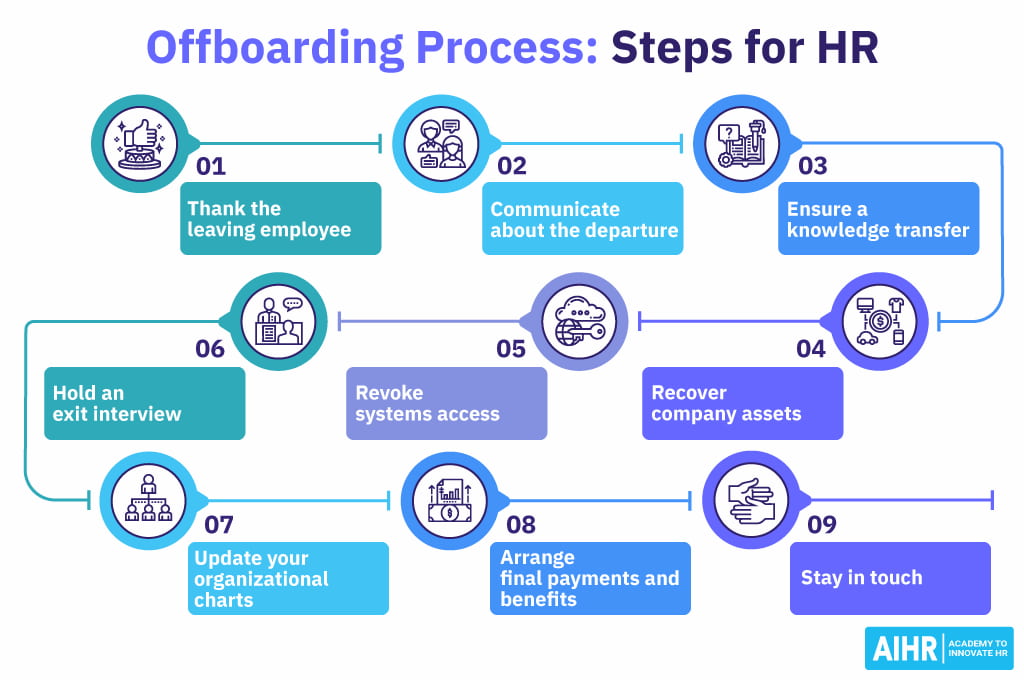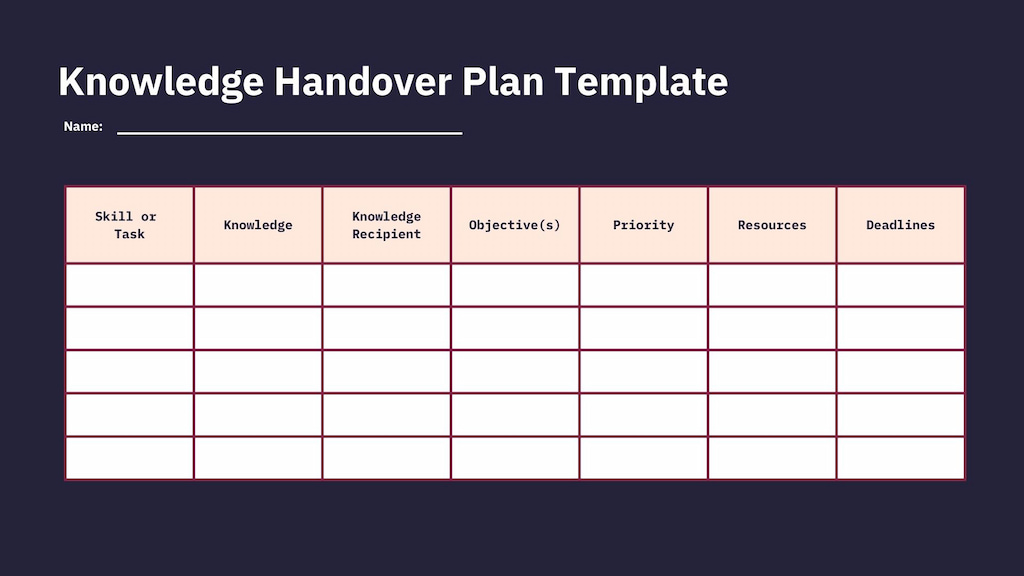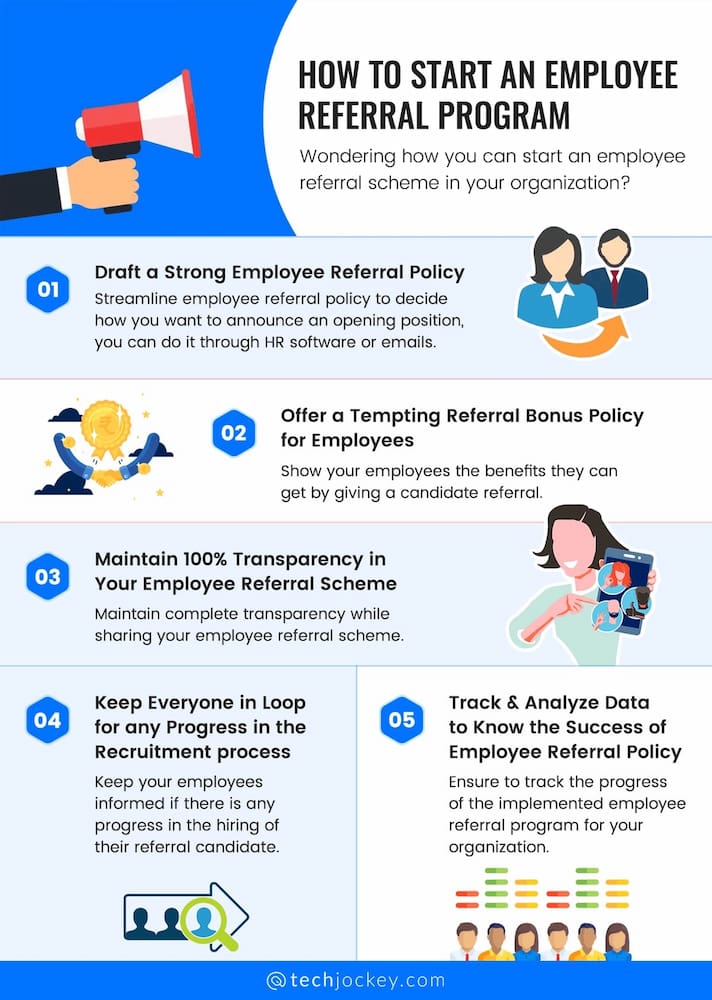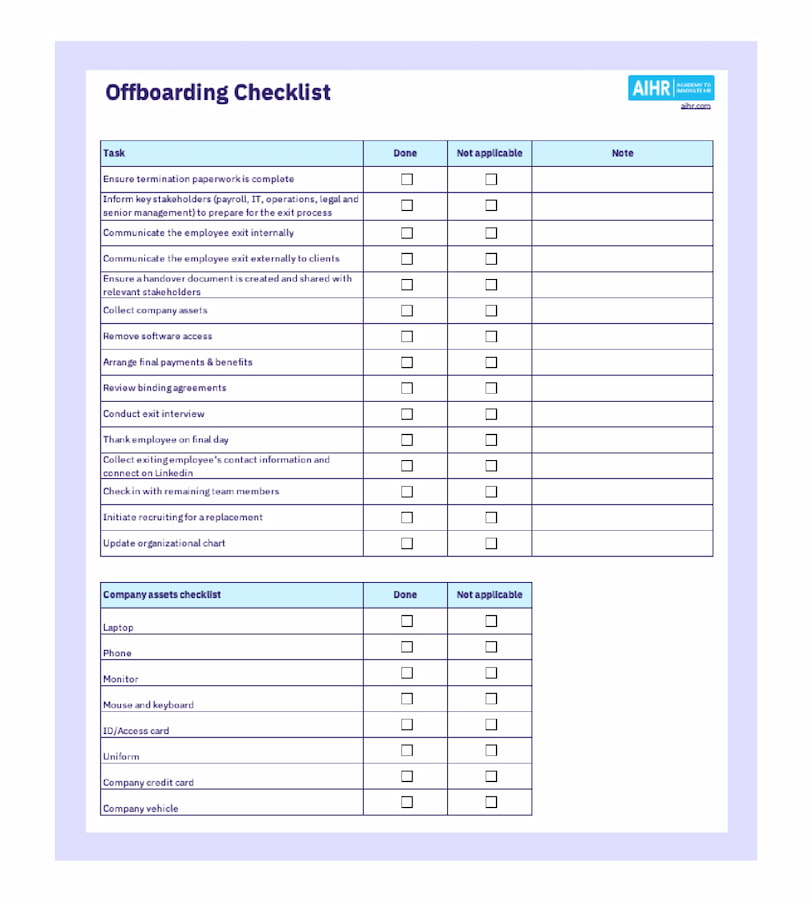Offboarding is a critical phase in the employee lifecycle that is often overlooked. While much attention is given to the hiring and onboarding processes, a well-structured offboarding procedure is just as vital for ensuring a smooth transition when employees leave. Whether an employee is retiring, resigning, or being terminated, a thorough employee offboarding checklist helps in managing the process effectively, protecting company assets, and maintaining positive relations, especially when referent power dynamics are considered.
In this article, we’ll walk you through the essential components of an offboarding checklist and explain how to implement them effectively to ensure a seamless transition for both your company and the departing employee.
Preparation Before the Offboarding
Proper preparation is key to a smooth offboarding process. Before an employee’s departure, there are several steps you should take to ensure all necessary arrangements are in place.
1. Notify relevant parties
Start by informing all relevant parties about the employee’s upcoming departure. This includes the employee’s direct team, HR department, IT department, and any external partners or clients they may be working with. Timely notification helps everyone involved prepare for the transition and ensures that there are no surprises.
🌟 Action items
- Send an internal announcement to the team and relevant departments.
- Notify clients or partners, if applicable, to manage expectations and introduce the new point of contact.
2. Review and document responsibilities
Review the departing employee’s current responsibilities and document their ongoing projects and tasks. This helps in redistributing the workload and ensures that nothing falls through the cracks during the transition.
🌟 Action items
- Conduct a meeting with the employee to review their duties (and don’t forget about the meeting agenda).
- Create a detailed list of their projects, clients, and daily tasks.
- Identify team members who will take over these responsibilities.
3. Plan knowledge transfer
A structured knowledge transfer plan is crucial to maintain continuity and efficiency. Arrange for the departing employee to train their replacement or other team members on their duties and any specialized knowledge they possess.
🌟 Action items
- Schedule knowledge transfer sessions.
- Document key processes, contacts, and project details.
- Ensure that all critical information is shared and understood.
4. Prepare exit interview
An exit interview is a valuable tool for gathering feedback and understanding the employee’s experience with your organization. It can provide insights into potential areas of improvement and help you refine your offboarding process.
🌟 Action items
- Schedule the exit interview in advance.
- Prepare a set of questions to gain constructive feedback.
- Ensure a neutral and comfortable setting for the interview.

5. Organize final payments and benefits
Ensure that all final payments (final paycheck for a terminated employee), including salary, bonuses, and accrued benefits, are calculated accurately and processed on time. This helps in maintaining a positive relationship with the departing employee.
🌟 Action items
- Review the employee’s final paycheck details.
- Confirm the status of any pending bonuses, commissions, or reimbursements.
- Arrange for the continuation or termination of benefits as needed.
6. Retrieve company property
Collect all company property from the departing employee, including laptops, mobile devices, access cards, and any other equipment or materials they may have. This step is essential for security and inventory management.
🌟 Action items
- Create a checklist of all company property assigned to the employee.
- Schedule a time for the employee to return these items.
- Verify the condition of returned items and update inventory records.
By thoroughly preparing before the offboarding process begins, you can ensure a smoother transition and minimize potential disruptions to your team’s workflow. This proactive approach sets the stage for a successful offboarding experience for both the departing employee and your organization.

You can also download and use this free offboarding checklist template, or even make your own based on our article 😉
Communication
Effective communication is crucial during the offboarding process to ensure a smooth transition and maintain a positive work environment.
📝 Notify team members
Informing relevant teams and departments about the employee’s departure helps manage expectations and prepares everyone for the transition.
- Inform relevant teams and departments: Ensure all departments that interact with the departing employee are aware of their departure to plan accordingly.
🗣️ Announce departure
Making internal and external announcements about the employee’s departure maintains transparency and sets the stage for a seamless transition.
- Internal announcements: Communicate the departure to all internal stakeholders, including the immediate team, HR, and other relevant departments.
- External announcements: Notify clients, partners, and any external parties the employee worked with to ensure continuity and introduce the new point of contact.
Administrative Tasks
Handling administrative tasks efficiently is essential to secure company assets and ensure all formalities are completed.
🆕 Update access and permissions
Revoke the departing employee’s access to all company systems and accounts to maintain security and protect sensitive information.
- Revoke access to company systems and accounts: Remove the employee’s access to email, project management tools, databases, and other critical systems.
🏘️ Retrieve company property
Collect all company-owned equipment and materials from the departing employee to keep track of inventory and secure assets.
- Collection of devices, keys, and other equipment: Ensure all items, such as laptops, mobile phones, access cards, and office keys, are returned in good condition.
📄 Complete final documentation
Finalize all necessary exit paperwork and agreements to ensure compliance and maintain accurate records.
- Finalize exit paperwork and agreements: Complete any required forms, agreements, and documents related to the employee’s departure.
Knowledge Transfer
A thorough knowledge transfer process is vital to maintain continuity and ensure that critical information is not lost.
📚 Handover documentation
Ensure that the departing employee provides detailed handover notes and documentation to support their successor or team.
- Ensure detailed handover notes and documentation are completed: Collect comprehensive notes on ongoing projects, procedures, and contacts.
🤝 Conduct knowledge transfer meetings
Organize meetings between the departing employee and their successor or team to facilitate a smooth transition of responsibilities.
- Schedule meetings with the team or successor: Arrange sessions to discuss ongoing projects, key tasks, and any specialized knowledge the employee holds.

Financial and Benefits Considerations
Addressing financial and benefits-related matters promptly ensures the departing employee receives all owed compensation and understands their benefits options.
💸 Process final payroll
Handle all final payments and reimbursements accurately and on time to maintain a positive relationship with the departing employee.
- Ensure all final payments and reimbursements are handled: Verify the accuracy of the final paycheck, including salary, bonuses, and accrued benefits.
🙌 Discuss benefits and retirement plans
Provide the departing employee with information on how to manage or transfer their benefits and retirement plans.
- Explain how to manage or transfer benefits: Offer guidance on the continuation or termination of health insurance, retirement savings, and other benefits.
Exit Interview
Conducting a thorough exit interview is a valuable step in the offboarding process. It provides insights into the employee’s experience, identifies areas for improvement, and helps maintain a positive relationship even after they leave.
💬 Schedule the exit interview
Set up a meeting with the departing employee to conduct the exit interview. Ensure it’s at a convenient time and place, allowing for an open and honest discussion.
- Choose a comfortable setting: Select a private and neutral location where the employee feels at ease to share their thoughts.
- Allocate sufficient time: Ensure the interview isn’t rushed and there is enough time for a comprehensive discussion.
❓ Prepare the questions
Draft a set of questions that cover key areas such as job satisfaction, management, company culture, and reasons for leaving.
- Job satisfaction: Ask about the employee’s experience and aspects of their role they enjoyed and those they found challenging.
- Management: Inquire about their relationship with their manager and any feedback they have regarding management styles.
- Company culture: Seek their opinion on the work environment, company values, and team dynamics.
- Reasons for leaving: Understand their motivations for moving on and if any underlying issues could be addressed.

🎙️ Conduct the interview
During the interview, create a respectful and open atmosphere to encourage honest feedback. Take notes and ask follow-up questions as needed.
- Listen actively: Show genuine interest in their responses and avoid interrupting.
- Maintain confidentiality: Assure the employee that their feedback will be kept confidential and used constructively.
🤔 Analyze the feedback
Review the information gathered from the exit interview to identify common themes and areas for improvement.
- Identify trends: Look for patterns in feedback across multiple exit interviews to address systemic issues.
- Develop action plans: Create strategies to improve areas of concern and enhance the overall employee experience.
👋 Follow up
Thank the departing employee for their time and feedback. If appropriate, inform them of any changes or improvements made as a result of their input.
- Express appreciation: Show gratitude for their contributions and insights.
- Provide updates: If possible, share how their feedback has influenced positive changes within the organization.
By incorporating exit interviews into your offboarding process, you can gain valuable insights to improve your workplace, retain top talent, and ensure a smooth transition for both the departing employee and the organization.
Post-Offboarding Considerations
After an employee has left the organization, there are several important steps to take to ensure a smooth transition and maintain operational continuity. These post-offboarding considerations help close any remaining loops and set the stage for future improvements.
✍️ Conduct an internal review
Evaluate the offboarding process to identify any areas that can be improved.
- Gather feedback: Collect input from team members involved in the offboarding to understand what worked well and what didn’t.
- Assess documentation: Ensure all handover notes, knowledge transfer documents, and exit paperwork are complete and accessible.
📕 Update organizational records
Make sure all records and directories reflect the employee’s departure.
- Remove from systems: Ensure the employee’s details are removed from company databases, directories, and mailing lists.
- Update organizational charts: Reflect the change in team structure and roles in all relevant documents and tools.
🔊 Communicate with stakeholders
Inform relevant stakeholders about the departure and any transitional arrangements.
- Internal communication: Update the team on how tasks and responsibilities have been redistributed.
- Client communication: If the employee had client-facing responsibilities, ensure clients are informed about the new point of contact.
🔐 Maintain security
Ensure that all security measures related to the departed employee are thoroughly addressed.
- Monitor for unusual activity: Keep an eye on company systems for any unusual activity that might indicate a security breach.
- Audit access logs: Review logs to ensure the employee no longer has any form of access to company systems or premises.
💭 Reflect on the offboarding process
Use the insights gained from the exit interview and internal review to refine your offboarding practices.
- Identify improvement areas: Pinpoint weaknesses in the process and develop strategies to address them.
- Implement changes: Update the offboarding checklist and related procedures based on the lessons learned.
🚪 Keep the door open
Consider maintaining a positive relationship with former employees for potential future collaborations.
- Alumni networks: Create or update alumni networks to keep in touch with former employees who might be valuable for future projects or roles.
- Referral programs: Encourage departing employees to refer potential candidates or business opportunities to the organization.

By paying attention to these post-offboarding considerations, organizations can ensure they address any loose ends, learn from the process, and build a foundation for continuous improvement in their employee management practices.
FAQ: Offboarding Checklist
❓ Why is offboarding important?
Offboarding is crucial because it ensures a smooth transition for both the departing employee and the organization. It helps maintain operational continuity, secures sensitive information, and leaves a positive impression on the departing employee, which can benefit the company’s reputation.
❓ What is an offboarding checklist?
An offboarding checklist is a structured guide that outlines all the necessary steps and tasks to be completed when an employee leaves an organization. This checklist ensures that nothing is overlooked and includes tasks like updating access permissions, retrieving company property, and conducting an exit interview.
❓ What are the key elements of an offboarding checklist for employees?
Key elements of an offboarding checklist for employees include:
- Returning company property
- Completing final documentation and agreements
- Participating in an exit interview
- Knowledge transfer to remaining team members or successors
- Understanding final payroll and benefits information
❓ What should managers include in an offboarding checklist?
An offboarding checklist for managers should include:
- Notifying team members and relevant departments
- Announcing the departure internally and externally
- Updating access and permissions
- Retrieving company property
- Completing final paperwork
- Scheduling and overseeing knowledge transfer meetings
❓ How does an offboarding process checklist help?
An offboarding process checklist helps ensure that all necessary steps are followed systematically. It helps avoid any potential security risks, ensures compliance with legal and company policies, and facilitates a smoother transition. This can include an offboarding checklist for employees and an offboarding checklist for managers.
❓ What is an offboarding document?
An offboarding document is a formal record that outlines the steps and tasks involved in the offboarding process. It serves as a guide to ensure all necessary actions are taken, such as updating access permissions, retrieving company property, and finalizing exit paperwork.
❓ Why is a knowledge transfer important during offboarding?
Knowledge transfer is vital during offboarding to ensure that important information and tasks are passed on to remaining team members or successors. This helps maintain productivity and reduces the risk of knowledge loss, which can be critical for ongoing projects and operations.
❓ How should final payroll and benefits be handled?
Final payroll and benefits should be processed promptly and accurately. This includes ensuring all final payments, reimbursements, and any outstanding expenses are handled. Additionally, discussing how to manage or transfer benefits and retirement plans is important for the departing employee.
❓ What should be done after the offboarding process is complete?
Post-offboarding considerations include conducting a review of the offboarding process to identify any areas for improvement, ensuring all documentation is completed and filed, and maintaining communication with the departed employee if needed for future references or network connections.
❓ What is an HR offboarding checklist?
An HR offboarding checklist is a comprehensive guide used by the HR department to ensure all necessary steps are followed when an employee leaves the organization. It includes tasks like updating access permissions, retrieving company property, and conducting exit interviews to ensure a smooth and compliant offboarding process.
Conclusion
By following a comprehensive checklist, you can address all critical areas, from communication and administrative tasks to knowledge transfer and final documentation. Remember, a well-structured offboarding process not only benefits your departing employees but also supports the ongoing success of your team.
For a seamless offboarding experience, consider using Everhour. Its intuitive time tracking and project management tools can help you keep track of tasks, deadlines, and important details, ensuring nothing falls through the cracks. With Everhour, you can enhance your offboarding process and focus on what truly matters: a positive and smooth transition for everyone involved.
▶️ If you are managing a team of 5 or more and looking to boost efficiency, Everhour is the perfect tool to keep your team on track. With seamless time tracking, you can easily estimate task durations, set clear budgets, and generate detailed reports inside Asana, Trello, Jira, or any other pm tool.
When used transparently, time tracking software can improve employee morale by promoting fairness, recognizing effort, and helping prevent burnout.


